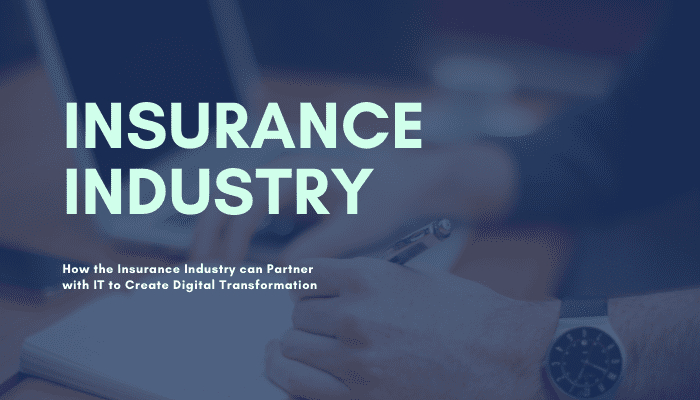- The global Artificial Intelligence market is predicted to expand significantly, reaching a market value that exceeds USD $190.00 billion by 2025.
- The wearable AI market size is projected to reach approximately USD $180 billion by 2025.
- The expected annual growth rate of the AI market between 2020 and 2027 is 33.2%.
A recent report produced by McKinsey & Company– an American management consulting firm with a global reputation, explored the plethora of ways in which the insurance industry is partnering up with IT- particularly in relation to Artificial Intelligence (AI), and to what extent this is likely to affect the industry in the next decade or so.
Most of the technologies required for integrated user stories- whereby insurance industries adopt a holistic approach that considers every facet of a person’s day-to-day health risks and complications, already exist; in fact, they have existed for quite some time.
With the proliferation of convolutional neural networks and other deep learning techniques, experts have predicted that AI may actually reach a point where it can successfully mirror the: reasoning, problem solving, learning, and perception of a human mind in an insurance context.
This would mean that the insurance sector would see a significant shift from its current ‘’detect and repair’’ model, moving to a more retrospective (and efficient) structure that attempts to predict and consequently prevent problems.
Of course, this is also dependent on other [key] industries’ abilities to successfully incorporate new, innovative and advanced technologies into their day-to-day operations so as to: enhance productivity, cut costs, and optimise customers’ experiences.
Such a shift additionally presumes that insurance carriers will be able to successfully position themselves in a way that allows them to adequately respond to new business opportunities, and immerse themselves in evolving business landscapes. These changes will likely significantly affect the ways that distribution, claims and pricing are carried out.
Below we will further discuss the likely patterns that will emerge within the global insurance industry as a result of the growing presence of AI (as well as the e-commerce industry following the COVID-19 pandemic).
Three AI-related trends shaping insurance
The impact of the growing Artificial Intelligence-related technologies are already being seen in properties, businesses and- of course, vehicles (with Tesla being the most notable figure in that area).
As hinted above, the unprecedented COVID-19 era inadvertently forced businesses around the world- including insurers, to rely significantly on digital services.
Whether it is related to their workforce, distribution, or communications, the increased emphasis on digital technologies (and the proliferation of the e-commerce sector globally) that was seen during the last year and a half has unequivocally meant that businesses have become more accustomed to structures that incorporate a high degree of automation and AI into their daily operations
1) Increased Prevalence of Physical Robotics.
The sphere of physical robotics has achieved a plethora of innovative accomplishments in the last decade or so, which are predicted to heavily influence the way that humans continue to interact with the world around them in the future.
3-D printing, for example, will likely alter manufacturing, as well as commercial insurance products. With 3-D printed buildings expected to be quite common by the year 2025, insurance carriers will need to adequately ascertain and understand the new risk assessments involved.
Moreover, automated farming equipment, drones, surgical robots will likely be available for purchase within the next 10 years. By the year 2030, it will be much more normal for ‘standard’ vehicles to have autonomous, self-driving options and capabilities.
Moving forward, leading figures in the insurance industry will need to understand how certain progressions in the sphere of robotics will impact day-to-day life risk pools, facilitate new products, and alter customer expectations if they wish to maintain their relevance.
2) Explosion of Data from Connected Devices
The incorporation of AI into existing physical devices that humans commonly use- such as cars, phones, home assistants, and smart watches, is projected to continue to increase exponentially, before eventually technologically expanding to the point where more AI-based categories are introduced (such as eyewear, clothing, shoes, and medical devices).
Field analysts have estimated that by the year 2025, there could be up to one trillion connected devices globally.
Obviously, the new data reaped from these devices will drastically change the ways carriers can understand their clients’ buying trends- propelling real-time service delivery and introducing more personalized and individualistic pricing options.
3) Advances in Cognitive Technologies
Most cognitive technologies are primarily being used for voice, image and text processing, but this area is likely to see a much wider scope of application in the next couple of years.
Increasingly powerful cognitive technologies will [likely] allow the insurance industry to process a much wider (and complicated) data pool in comparison to now, and this will enable ‘’active’’ insurance products which are tied to a person’s real-time activities and behaviour to be introduced.
The increased integration of these technologies will therefore lead to insurance carriers having access to models that are able to regularly learn and adapt to the world in real-time- revolutionizing the sector.
Insurance in 2030: Easier Distribution
By the year 2030, purchasing insurance will be a lot faster.
Advanced AI algorithms that are capable of independently and automatically creating risk profiles will mean that there will be a lot less active human involvement holistically- particularly on the part of the insurer. This can reduce the time it takes to purchase a life or commercial insurance policy to a couple of minutes- or even a few seconds.
Home insurance carriers already allow customers to receive instant quotes- in fact, this has been going on for quite some time as of 2021, but this is likely to continue expanding significantly within the next decade.
Eventually, insurance providers will likely be able to automatically issue policies to a much wider pool of consumers (as telematics technologies mature and AI-based pricing algorithms become more ‘’mainstream’’.
How the changes in the sector will affect private insurance licensors has not been examined, but this is likely to prove to be quite a fruitful career option given the industry’s long-standing prominence. Individuals with an insurance license will likely find themselves in an optimal position to take advantage of the aforementioned industry changes.
Final Words
The evolution of the insurance industry is undeniably closely linked with that of the AI sector- fuelled by the extensive integration of both deep learning and automation.
Whilst it is impossible for us to predict the exact state of the insurance market in 2030, carriers can take a plethora of steps to make sure that they are adequately prepared for the automation-related changes that will inevitably pervade the industry in the coming years.
These include: a) getting smart on AI- related technologies and trends, b) creating and executive an extensive data strategy, and c) developing and initiating the implementation of a consistent strategic plan.
We hope you enjoyed reading.



































